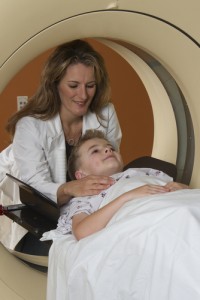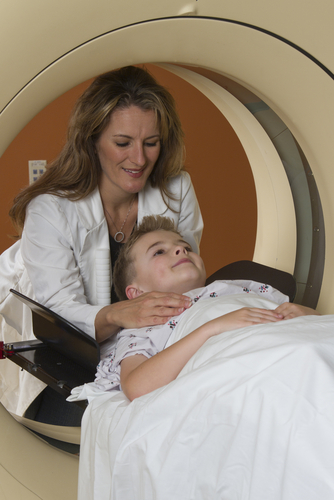 An Israeli industrial engineer has developed and patented a special lens to improve radiation therapy for patients of all ages, but with particular advantages for children, called MercyBeam. The engineer of the device, who had already designed a real-time X-ray detector and an X-ray explosive identification system, started developing the lens after he suffered a paragliding accident and spent months in the hospital where he witnessed the limitations of X-ray-based medical technology.
An Israeli industrial engineer has developed and patented a special lens to improve radiation therapy for patients of all ages, but with particular advantages for children, called MercyBeam. The engineer of the device, who had already designed a real-time X-ray detector and an X-ray explosive identification system, started developing the lens after he suffered a paragliding accident and spent months in the hospital where he witnessed the limitations of X-ray-based medical technology.
The lens is able to collect most of the three-dimensional X-rays that are ejected by standard X-ray generators and converges them directly onto a tumor. The purpose is to increase the dosage in the tumor cells, and avoid radiation to affect the healthy tissue surrounding the tumor. The converging technology enables the use of photon-energy X-rays 100 times lower than those used by current systems based on linear accelerators (LINACs) — particularly advantageous in reducing the risks of Radiation Therapy in children.
“It’s the first time it will be possible to concentrate an X-ray beam,” explained the chief physicist at Sheba Medical Center’s radiotherapy department, Dr. Dror Alezra, in an article by Abigail Klein Leichman on Jewish Journal. Dr. Alezra said that the device reduces the toxicity and limitations of the available treatment. “This is important for treating children. Currently, the parent cannot stay in the treatment room and so the child is alone and may have to be sedated. With MercyBeam, an adult could stay by their side with very light shielding, because of the low and concentrated energy.”
The company Convergent R.N.R. worked in collaboration with medical physicists and oncologists at top hospitals including Sheba Medical Center in Israel and the University of Texas M.D. Anderson Cancer Center, according to company’s co-founder and CEO Ze’ev Harel. The Massachusetts General Hospital in Boston, Cincinnati Children’s Hospital Medical Center in Ohio and Auckland City Hospital in New Zealand were also part of the preliminary discussions.
“They all like our approach,” Harel said. “When we presented our technology to Hadassah and Sheba medical centers and asked for their feedback, the bottom line of those meetings was, ‘When can you install the first system at our hospital?’ It was very encouraging, there was not even one criticism.”
Currently, radiation therapy has several risks, as the high-energy radiation not only affects the tumor, but also the healthy surrounding tissue. It also requires large and expensive devices and cannot be administrated in children younger than three years old. However, Convergent R.N.R. assures that MercyBeam is able to solve all of these problems.
MercyBeam will also be much more inexpensive than a standard system, with a total cost between $700,000 and $1 million, while a LINAC may cost $4 million and a proton-beam system can cost up to $80 million. MercyBeam does not need to be enclosed in a special “vault” and, as it is a small and light system, it is able to be used in mobile treatment vans for remote or deprived areas.
[adrotate group=”1″]
On the other hand, the MercyBeam also has limitations, as it will be more effective on smaller targets as on the skull or spine, because of the low volume. Harel has explained that, “it was not easy to find the perfect raw metal materials for the MercyBeam lens. We checked all over the world and found good enough quality only in Germany.”
“You have to grow the metal crystals and cut them in a very precise way, and then polish them. Our lenses are built from several rings, each of a different metal so that all the beams will converge into the correct volume of treatment. If we can grow the crystals ourselves that would reduce the price of the lens itself by approximately 70 percent,” he added.
According to the CEO, the only similar equipment existing are the lenses used by NASA to control X-ray radiation in space. However, “it costs millions and millions to do one set of lenses” and the company is currently looking for funding to build a prototype, after it had already been granted with $700,000, from the Office of the Chief Scientist.


